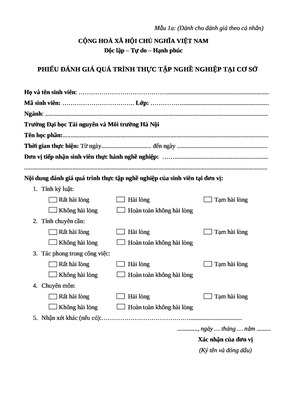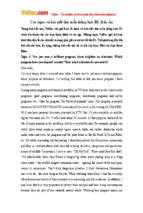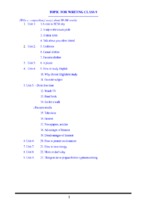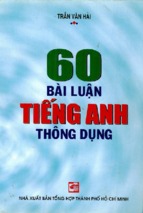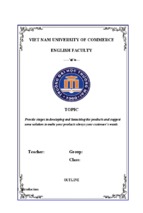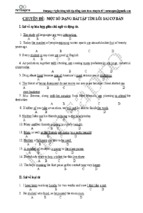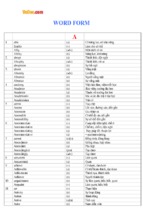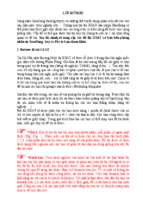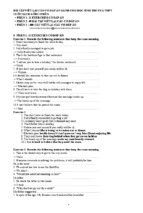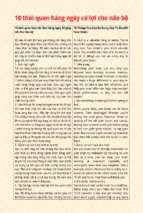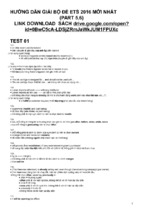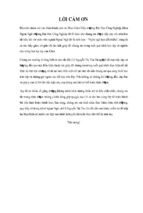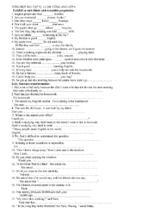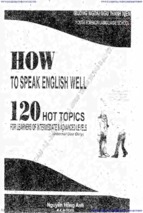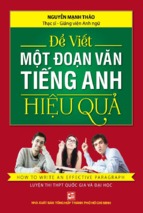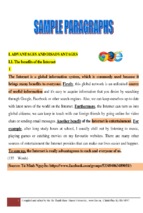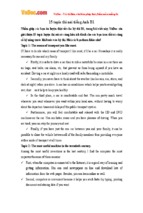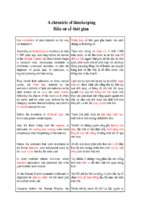4
-
1000+Pictures
for Teachersto Copy
AndrewWright
q,v,f J I
k\_
|
i'€ {,tzs
LU}f
J.r,!
g3
L-.
Contentsand Introduction
->
:
:
!}
!
1
How to draw
2
Settings
3
The organisation of the book and the selection
of language items
+=-
36
The se.lection,topics and larrguageitems in this book are
54 b.rserl on the T/rrcs/lo/rlLct,cl, a clocume.nt producec'l bv
Topics, behaviour, notions
3
tire Cor-rncilof Europe for language svllabus designers.I
84 have also referreclto the Cnrlhrill,gt'Erg/ls/rLc,rlcon.
Illustrated vocabulary and grammar
4
Language is enormouslv rich. A r,r'orclcan have nranv
meanings
depe.nding on context. I have had to be
118
Pictures for composition
5
sr.lcctive.and have.ofte.nonlv been able to illustrate orre
of se.,'e.ral
possiblc.mearring:. I have rrrnitted concepts
Some basic ways of using pictures in
6
128 that are impossible to represent pictori.rllv ancl language
language teaching
ite.mslvhich are re.latir.e.ltinirr.tluent,r.c. rr'ithin stages5
1,36 or 6 of the Canrbridge English Lexicon.
Further reading
Onlt' rarclv can a picture contmunicate the same
137 rnc'aningto evervone n'ho seesit. The role of piciures in
Index
t l r i s b r t t r k i : t r ) c ( ) n t r i h u t ct o t h t ' l e , r r n i n g r ' f m e . r n i n g
erperienced bv the learner .rsprrt ot a situ.rtitrn:referred
k r i n a c o n r . e r s a t i o ni,l l r r s t r a t i n sr s t o r ) ' ( r r a s p a r t o f a
gar-ne.It is the experience of the situation as a n hole
r,''hich helps thc lcarne.r to build up a sense of the
(For r-noreon the
M a n y t e a c h e r s r e c o g n i s e t h e ' t t s e f u l n e s s o f * i r t r p l e n-reaningor mcanings of thc langr.rage.
128).
tcaching
of
me.aninc
sc.e
pagc.
dran'ings in their te.rching. Dran'ings have tnan"'
advantages: thev are quick to do; their content can be
determined exactlv bv vou, the teacher;thev are easv tc) Stereotyping
reproduce. But manv teachersthink thev c.rnnot drau'l There has been no attemDt to reDrese.ntclifferent racial
Or if thev can clrau' the'v feel ther. have not got etrt,ltglt t r p r ' * i r t t l r e d r , r t r ' i t t g . i r r L l r i . t r t ' r t r kT. h e r e
S,etter,tli*t'd
'pot.rto'
time.
he.rclsare me.lnt to representall of us! The r-rseof
This book is based on years of enjov.rble experie'nce' s t e r c t r t v p i c r l , r . r c i . - r ls v m b o l s h a s b c c n r e . j e . c t e cal s
gained in helping teachersto learn hon' to c-iran'tn over rrr-rdesirable..
thirtv countries. It contains a care'ful intrtttiuction ttr
dran ing and over one thorrsandclrarvirrgsfor teacherstr-r T h i s n e w e d i t i o n
coPi/
1000 PrcluHr,sr,orrTr,.rcrrF-Jts
r() Colv has been usc'd bv
teachers in countries all over the n'orltl. Some tcacher-s
Who might use this book?
have said that thev rvoulcl n()t bc n'ithout itl
The rnain users of this book u'ill be langrrage teache'rs. \ e ' r ' e r t h e l e s s , s u g g e s t i o n s h a v e b c ' e n m a c l e f o r i t s
anvone' i ) n p r ( ) \ ' c m c n itr r t l r eJ i g l i to i t l t i r r , ri t l t ' - r . r r r g i r rLg' \ F e r i r n ( ' H
Hor,r'ever,teachersof othe'r subjccts,arrd ir-rdeecl
r,r'hose job involvt's commttnici'ttiort, rt'ill finrl this of use in so lrr;lnv classrooms.ln this neu' cclitior-rthere
m a t e r i a l r c l e v a n t . I h a r . e m e t s p c e c h t l r e r , r p i s t : . are sixteenertra pages.Additions inclucle:more pages of
sociologists, vouth leaders, voga teachers as r,r'ell as faces ir-rclrrclirrg
hou. to look v()unger (.rlu'avs r-rsefulin
teachersof historr,,geographv anc-lecttnomicsu'ho make these stressful times); ne\\' pJge\ illustrating tenses anrl
With the examp)t': givt'tt phclnologv and nine mor€.pagcs on iclcasfor making use
use of simple rc'pre'sc'ntations.
in this book, teachersand their stuc'lcntsctrn drar'r'their of the pictures in tlie book for languare te.aching.Marrv
orvn pictures r,r'itl-rcomputer softu'are clr.rn'ing packages oi the inclivitir"ralpictrrreshave been motlifiecl.The inclex
as lt'ell ;rs lnore trac'litionallvon thc' boarcl,on hanclouts no'"r'incorporatesArnerican crs\r'ell as tsritishEnglish.
and in displavs.
Acknowledgement
Copying
=
the pictures
B v c o p v i n g I r n e a n , l o o L i n g a t t h r ' p i c t t r r e si r t t h e b o c t k
and drarl,ing vour ()\vr1 r'e'rsions.I also mr'an that a
teacher,having bought hi-. or her o\\'n copv nf the book,
should feel that he or she can m(rke multiple copies ior
use nith his or her or.r'nstttdents. I'ermissittn to m;rke
multiple' copies is not gra ntecl for itny other
circumstancesexcept r'r'ith erprcss pcrmission givert b1
tl.republisher.
and thanks
I r.r'otrlcllike to thank thc. r-n.urv,r-nanvte.rchcrsrvho h.rr.e
p a s s e do n t o m e t h e i r p l t ' . r t u r r ' i r t u * r r r g t h i s b o o k a n d
macle their suggestionsior changr.sin the nerv eclition. I
particul.rrlr' \\'alrt t() thank I'aula Saudhan'r .rncl Julia
Dlrcl.rs,foi p.rssing on their experience to nte and for
r-nakir-rg
so manv helpir-rIsnggestions.
+a
a
a
>
F:
-c
!.l_
:
ll-t-
-!-
.>
>
.>
>
E
L
tsz
THow to draw
--_
In the first section I have reproduced the way
in which I help people to draw more effectively.
The level is higher than you need for copying
the drawings in this book. However, I have
decided to put it at the beginning of the book
becauseyou need basic help even for copying.
Essentially, in order to copy (i.e. without
photocopying!) you must:
1 judge proportions (is a line is longer or shorter
than another, or a shape thicker or thinner);
2 judge the angle of the lines (whether they are
lines or the edgesof shapes).
These are the main things. However, it will
also help you to study how I draw solid people.
When you learn my approach you will be able
to copy my solid people much more easily.
Similarly with the settings: when you learn
how I have avoided using perspective,you
will be able to copy them much more easily.
So, please,even if you are only going to copy
the pictures in this book (and not produce your
own), do look through this first section.
Thanks.
=
"!
Card or paper
=-J
-
Materials and techniques
--t
E--l
L-.
Teachers' flash cards should certainly be on
card and not paper. Card lasts longer and is
easier to handle. For pupils it may be as cheap
to use duplicated sheets rather than card. In
Britain it is possible to get cheap or free offcuts
of paper and card from printing houses.
Adhesives
-A
,4t
Sometimes you may want to stick thin paper to
card. You can:
I use a rubber baseci glue which does not
wrinkle the paper. Professionaldesignersdo
this.
2 use a paste. If you use a paste put it on the
thin paper and leave the paper to expand for
some time before putting it onto the card.
Photocopying
1 Don't go to the edge of your paper.
2 Don't use larger areas of black than your
machine can reproduce.
3 If you stick smaller piecesof paper down so
that the levels are different put typist's white
opaque along the edges to remove the shadowed line.
Grids
To give a senseof organisation to your text and
pictures arrange them within a frame and align
their edges. A frame (in British English - a
'grid')
may be made of one, two or even more
columns.
Tracing
If your top piece of paper is too thick for you to
see the image clearly put them both againsta
window pane and copy it like that.
How big?
Letters should be about two cms high. But
guiding rules like this are not very useful. Try a
sample - see what it looks like from the back of
the class.
Colour
It is so tempiing to use lots of bright coloursin
order to please the students. Much better to
choose colours for other purposes:
1 to make an object more recognisable if the
shape is rather ordinary, for example, an
orange;
2 to direct attention to something, particularly
if it is small within a picture, for example,
one person giving another a present. The
people could be drawn in black line and the
present in a colour;
3 to express feelings and to make the picture
look nice!
,-<.
--
How to draw
.l:i
stickpeople
-1_
-
Canyou seethe difference?Is A wider than B?Is F longer than D?
:
F-:
D
F
+.-
If you think A is wider and D is longerthen you canjudge anglesand proportions
and that is all you need for copyingthe drawingsin this book. Indeed,it is the basic
skill you need for doing objectivedrawingsof the highestorder.
Amazing factsabout the human body
The head and body are equalin length to the length of the legs.
The arms are as long as the body.
,a
f
e3a
More amazing facts
tR ilr,irl,o"',
{
f
F--
elbows are halfway
down the arms and
point backwards
no hips,no hands
knees are halfway
down the legs and
point forwards
L\[m.mr'.'il$:s't'"
=t-
-
+
1tr,#'!)*
/, rL
'^,nS
I wishI c,oula
Al
e
I
=1-
;a- _
f,(ton
,4T:?T
It ti"ut
run tikeYou.l
#l"i?"etut
r r U io ""?
l-_
-1
. l
^-,o(o\''
_t<
e
i?
F
E
E
=-
How to draw
stickpeople
We canonly interpret a stickperson's
actionsif he or shehas the sameessential
featuresof a'real' person;so you must
baseyour drawingson how peoplelook
and move.The 'real'peopleyou copy
could be you (yourself,actingout the
,(g
position and copying each bit, starting
with the body) or a friend or someone in
a photo.
Most artists study a photograph or a
model if they are drawing something for
the first time.
lf you or youtftiend, ak achn!ouV a posrlton,then
clo se the whdovts O,td loch- the doors in Cate Wu afe
laoh.ed bpon aad Jadged lo bec.azy!
Here are someactionsto copy. Study the
anglesof the body, then the arms and
legs.Judgethe anglesof eachbit by
comparingit with eithera verticalor
horizontalline.
C'
Copy theanglesexactlyas you seethem
here and you will then have the same
dynamicaction.And you CAN judge
angles!You did it on page 4lIf you[et it
*ro.rg, do it again!
sp
rt
'
6* rA::")
^( r'ot*
(od
"l)
'-^,^ I
*"*'?:,^-;
i
ild" I'ur?)eett
*"
.
{de
fi rt
G
^
UI
r
d
--
tID
z
=
dr\c
v
Y--
v!j.Q
"'.. .y6QLf "
D('o^
,,.4\c ^ r.rgrrrccs
Urr'i,t^'
on3\e
l-ioi,'no.l"n*"
I^ahu
""*
^*'
r-J
irv\t
*lo
-
/
5od9'
Nd:ff"i:'llj*'l
"tffi
T{"o&w.''';'
C
;v-
How to draw
stickpeople
t
-
+
>=-
C o p y t h e s ed r a w i n g s . S t a r tw i t h t h e b o d y .
ts+I
=
=
=
l--
Start u'ith the chair, then do the body.
>
=
>
=
>
l
F
]
Make drawings from thesephotographs,stick by stick. Start with the body.
Compare the angleswith vertical and horizontal lines.
1
!l-
t-'
l*
lt
L
tL
L
:
How to draw
stickpeople
Copy the angles exactly!
SlighbcharyesoF angleillus1raLe
diFFerznbwaqsoFwolking
(*t, fon-s.ar',il ,runniXg,and Jo,.ev"nepr.sent dif?err^L
Balance
dancerisfuung
Tnisbatle?
ove( Decause
her we$ht
fue box(,
is no{overher t*f
Draw furnifure, cyclesfirst
5he co,"lL
prl[ trp
\innc- \ess
uo,.=yJ*;4*#'o
)r\A\v
-
='{^ro-
R-l)
*
t
Characters
*
+
=,
r-
a
=
:
f1n
\<
L
How to draw
boxpeople
+€
ts
:
,1
E-
L-
Box people are useful becausethey have
characterand can be seenmore easilythan
s t i c k p e o p l e i n a c o m p l i c a t e dp i c t u r e .
Tne vifatacfiono{ the borpersonts achtcvedexac?lylius
rson. llo,rtever,
o( q Sl'icKpe
sf*r( wilh the body .
L1naY
Wha( sorL o( bod'yd,oyan want lo give hru or her?
Chooseone!
I[U^VAA
'lhen
drcta shcRgcrson lrhbs in t-he
Draw (ne bod.Vhrsf .
qcdon you wanl . prau Lhe lr'nbs kom lhecorners o( lhebox.
L..
.E-.-
t"E_
rE.
E
e
ei5*
==.t-
L
]
l-_
lt--
!*
]-
t.
L
L
L
L
L
b
E
!
I
Horv to draw
boxpeople
draw tn ltneS r?presentingfhe oth
boxpeople
_--.
=
I
-
>:
5
Here are urz.e rnor.eboxpeopleaUd'raon n the sa^e sfaSesas
ou7h'neaaboe. Nofe ho.l linesdis oppear fun|ta bodrcs
o( oVher linrbs.
e=*
E
LF
FF
+
F*
=l'-:
=
=
F
22
e
\
\1
aF*
tt-
oF sfr'ctrp ec>plebeca,ns.
{Woslo( th" drausingsin fhis booQ-are
hry are fias? 7odo. l*owever,
Yo6ca^ maUe a^q o( t!'terq solrd
by lhe ftrhniqnz )i,ren her< .
10
EE
E
2,
-4
-
How to draw
4
4
faces
=
-4
*ny rough arcl e willdo tor alace, parficularly if ir is
i r r e g v t l a r a n d bumpy!
'1
I
P, 3 in fhe eyes av$l nose firs( : thrU 4on'( Shou,rQXPrc-et|onin
Srn
rn plz dra utt ng . ftooev er , noses can beg rn fo sho"r ina{iuid.uqb
,<1
')'
'('
cnd,fi"Jo-for theeyebroc.ts
.
lon have tltree lines le{t,6na for the 7y16wth
Nirh thes? Ilneson ev(ra.ord.t'n^rUnuMber d ex?resrIonscqn be
rndde. tbueler, c,stn li(e the h,crLl cypresrionsfou r.o[e uitl
Y€rvratn arnbjkok-r
. Facio,l expresrions
con(fi'bwfe fo ye4rltnJ
Yog e fhe
u4 1Lo,h on,
with o the r b o d y h rqu,u,vtic ah oa, r er b a.l h ;,11v1
"
axpe.c.( df1' ons,oYe.
S e tti rg a n d , fh e p e fcelver ' s
lV is alrnos( rn^possib
le Yodrad ovr eypresion{essfac< |
rq if !
-. 1
q
.-
'
'('
\'
\
J
-
J
-r
High eyebrows
show surprise.
Low eyebrows
show concentration.
Angled eyebrows
show pain.
.-:
11
:
How to draw
>-
faces
]
:
==
Qeftingsadder !
=
=
/\
'L'
./\
'\'
J
7s
/"\
"t
;(;
-\
t-_
>
L
t-
The eyebrows rise
in the centre. There
must be a gap
between them or he
will look too
determined.The
mouth turns down.
The eyebrows are
now slightly
concave- this gives
that look of pain.
The mouth is now
longer and weaker
and further down.
Eyebrows still more
concave and further
apart.The mouth,
down-tumed, is
weakly down more
on one side.
Now the head is
back. The brows
are nearer the
eyes due to the
concentration
of the outburst.
The mouth must
turn down.
=
L
=
1
=
=
qettt'^g morc shrTrised,
]_
-
/l
A
lt^
')'
'(o
A
1
\.
J
o
^^
o\o
J
o
=l-
=
+=
Arching eyebrows.
S m a l l m o u t h ,i n t h i s
casevery slightly
upwards, giving a
hint of pleasure.
High eyebrows, not High eyebr ows. Surprisedhorror
t o o c l o s et o g e t h e r . Smalleyes,rather Bulgingeyes.
Tiny m outh.
Slightly larger eyes. intense.
Mouth shows hint
of pleasure in the
surnrise.
+
>-
r
>
E
>
72
=
Z
-'-;'*)
Florv to draw
I
faces
QeEhng hoppier ail the ?i,ye!
A
^t
tr
^
'
^
'\'
(
J
v
\./
T h e e y e b r o w sr i s e
and curve.
The mouth begins
to curve upwards.
T h e e v c b r o w sa r e
not onlv high and
rounded but are
n o w f u r t h e ra p a r t .
The mouth, of
c o u r s e ,i s n o w a
fuller smile.
The distance
between the
eyebrows is so
importantfor that
s i m p l eo p e ns m i l e
ts
a
Now the headgoes
back(vou show this
by placing all the
features higher on
t h e f a c e ) .T h e e y e s
c l o s e .T h e m o u t h
opens.
Qettng qrirnner
-
5
at.
-L-
-y
b
^,
This face is
s u r p r i s e d ,a l m o s t
sad! The eyebrows
are rather high. The
mouth looksa little
weak - perhaps
becauseit is rather
low.
=
The eyebrows are
now nearer to the
eyes and nearer to
the centre. The
mouth is bunched
and a little nearer
the nose.
The eyebrows now
touch the eyes.They
nearly meet and they
tip downwards
towards the centre.
One eyebrow rests
on the eye:the
other has flown
upwards. There
is a compressed
fold of skin
between the
eyebrows. Note
the corner of the
mouth is dou,tt.
-,
13
-
t-=
-<
How to draw
E-,
faces
<
F
€*:
youngerand,youngerf
The secreg o( loo4ctrtg
DrawArc{ea(uressfraller and lower.
<
=-:
+:
ts
'\'
P
a
e
--
e
ei+e
e.:-=
t--
_
z-
Fron tull tace lo Profile
+e-')'
=
a*F-
Vpana dowt
l-oofungsideways
,7
I!'-:
F
t-:
)
\.
=,-
>'.
74
E
z,
,,1-;
.J
-l
-l
How to draw
faces
=
1_
\.'
7".u
o)o
1_
)-1
2t
_1_
agonised
angry
anxtous
arrogant
a
7
--JL
-)-
-4
-:5
bitter
blissful
bored
cautious
.*
-=
aLa
+
,,,,+
lr$
4F,
\-
_*
-<
---
concentrating
confident
cold
curious
disapproving
disgusted
_.{
-*
T
-
determined
disappointed
-4
..-
15
:--
How to draw
I
faces
>
t--,
g
7',\\aa
t^FF.:
=
F.
dismayed
drunk
ecstatic
enraged
FF
--
v9
L
lr-
,'
=-=
EL--.
envious
exasperated
exhausted
frightened
--
!P
F^\.
60
F--
frustrated
hangover
horrified
hot
>l-
'./
ll.-.
\\
.,
t-
\-
=-
:
thurt
T6
hysterical
indifferent
innocent
>
E
-4
--
-:.
[-
How to draw
faces
=
*_
;\\
Ez'Y
*
=
F,
-_
=
:
interested
jealous
kind
lonely
mischievous
miserable
mistrustful
:
=
:s
-dE
:
lovestruck
--
=
_-{
obstinate
optimistic
perplexed
prudish
-a
4
-
rude
sly
susPrclous
thoughtful
4
4
t
t7
F-
How to draw
L-,=
faces
How to make more individual faces
maReall thedikftnce !
Dlfteren(0ttes,cloEhes,hai{
u
Yt
fo
U
Ll
+
=
>
u('
oO
L
9
=
=
j,=( l
>>
fft/
-=
-:
*
oa
e
+--
?fi,t
r-taw
OeE*tvl
+--
++G
*_
=*
F.
18
L
t:
_-*
How to draw
4
caricatures
4,
zj
-1
=
Essentially caricaturemeans exaggeration.
I f s o m e o n eh a s a s q u a r i s hh e a c li t i s r n a d e
s q u a r e .I f h e h a s a l o n g i s hp o i n t e dn o s ei t
is drart'n'u'erylong anclr'ery pointed.
P o s i t i o n c . ff e a t u r e s :i i t h e c. . v e sa r en e a rt h e
t o p o f t h e h e a r dt h e . va r e d r . r w nr i f t h c .t o p o f
the head.
a
-
-
=
.:
1
-4
a
a
A real test of a caricatureis if vou can
redraw it from memory. For people with
p o o r v i s u a l m e m o r i e st h i s m e a n sb e i n g
able to remember the appearanceof the
c a r i c a t u r ei n w o r d s .
Try it with the caricaturesdrawn above.
Look at them for a few moments, describe
them to yourself, and then, remembering
this verbal description, try to draw them
from memory.
I9
+
How to draw
caricatures
L
=
Itake useof s.hapesyd^ @'1gwe ^ wavd 1o'.
ha1 ar< easitr to renember.
==-
l-l
\00
=
t-
!:>
NV DD)>X
F
>
Bu^ld wp yM
out of hese b*s.
canLc,hres
--
------
t--
b-
eL_
E-
1-
l._
20
- Xem thêm -


